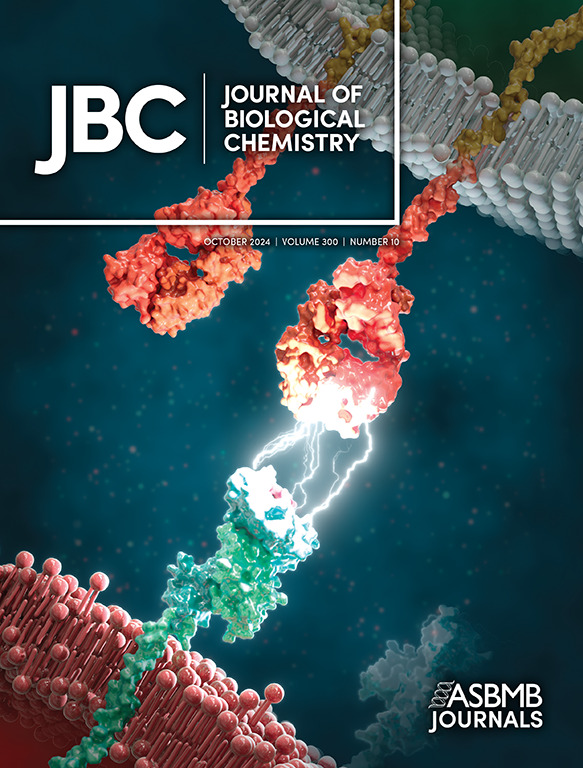秋水仙碱通过增强Sirt2-PP2Ac信号通路抑制炎性体激活,从而抑制血管钙化
IF 4
2区 生物学
Q2 BIOCHEMISTRY & MOLECULAR BIOLOGY
引用次数: 0
摘要
秋水仙碱(Col)是一种从秋水仙植物中提取的传统草药。Col具有抗炎的特性,对心血管疾病有一定的治疗作用。血管钙化与心血管疾病的发病率和死亡率呈正相关。然而,Col对特定的心血管疾病有效,特别是对血管钙化的影响尚不清楚。本研究采用高磷酸盐诱导血管平滑肌细胞(VSMCs)钙沉积,维生素D3加尼古丁或5/6肾切除加高磷酸盐饮食构建血管钙化小鼠模型。我们的研究结果表明,通过茜素红S染色和钙含量测定,Col减少了离体和体内模型的钙积累和血管钙化。体外实验结果表明,Col抑制血管钙化是通过增强丝氨酸5位点的磷酸化来降低NLRP3炎性体的激活。此外,我们发现NLRP3的磷酸化受蛋白磷酸酶2Ac (PP2Ac)活性的调控。此外,我们发现Sirt2通过调控PP2Ac在Lys 136位点的乙酰化而成为PP2Ac活化的主调控因子。更重要的是,我们通过使用Sirt2敲除小鼠证明了coll抑制血管钙化依赖于Sirt2的表达。我们证明Col可以保护血管钙化。我们的研究为Col的临床应用提供了新的见解。我们还建议Sirt2是血管钙化治疗的新靶点,Col可能作为Sirt2的激活剂,这可能对其他疾病有益。本文章由计算机程序翻译,如有差异,请以英文原文为准。
Colchicine inhibits vascular calcification by suppression inflammasome activation through the enhancement of the Sirt2-PP2Ac signaling pathway
Colchicine (Col) is a traditional herbal medicine derived from the plant Colchicum autumnale . With the property of anti-inflammation, Col has been demonstrated certain therapeutic effects in cardiovascular diseases (CVDs). Vascular calcification is positively related to the morbidity and mortality of CVDs. However, the specific cardiovascular conditions for which Col is effective remain unclear, particularly its impact on vascular calcification. In this study, we used high phosphate to induced calcium deposition in vascular smooth muscle cells (VSMCs), and Vitamin D3 plus nicotine or 5/6 nephrectomy along with high phosphate diet to construct vascular calcification mouse models. Our results showed that Col reduced calcium accumulation in vitro , and vascular calcification both in ex-vivo and in vivo models, which was evidenced by the Alizarin red S staining and calcium content determination. In vitro results showed that Col inhibited vascular calcification is contributed to the reduction of NLRP3 inflammasome activation through enhanced phosphorylation at Ser 5. In addition, we indicated that phosphorylation of NLRP3 is regulated by the activity of protein phosphatase 2Ac (PP2Ac). Furthermore, we identified that Sirt2 as a master regulator of PP2Ac activation through regulation its acetylation at Lys 136. More importantly, we demonstrated that Col-inhibited vascular calcification is dependent on Sirt2 expression by using the Sirt2 knockout mice. We demonstrate that Col protects vascular calcification. Our study provides novel insight into the clinical application of Col. We also suggest that Sirt2 is a novel target for vascular calcification treatment, and that Col may act as an activator of Sirt2, which could be beneficial in other diseases.
求助全文
通过发布文献求助,成功后即可免费获取论文全文。
去求助
来源期刊

Journal of Biological Chemistry
Biochemistry, Genetics and Molecular Biology-Biochemistry
自引率
4.20%
发文量
1233
期刊介绍:
The Journal of Biological Chemistry welcomes high-quality science that seeks to elucidate the molecular and cellular basis of biological processes. Papers published in JBC can therefore fall under the umbrellas of not only biological chemistry, chemical biology, or biochemistry, but also allied disciplines such as biophysics, systems biology, RNA biology, immunology, microbiology, neurobiology, epigenetics, computational biology, ’omics, and many more. The outcome of our focus on papers that contribute novel and important mechanistic insights, rather than on a particular topic area, is that JBC is truly a melting pot for scientists across disciplines. In addition, JBC welcomes papers that describe methods that will help scientists push their biochemical inquiries forward and resources that will be of use to the research community.
 求助内容:
求助内容: 应助结果提醒方式:
应助结果提醒方式:


